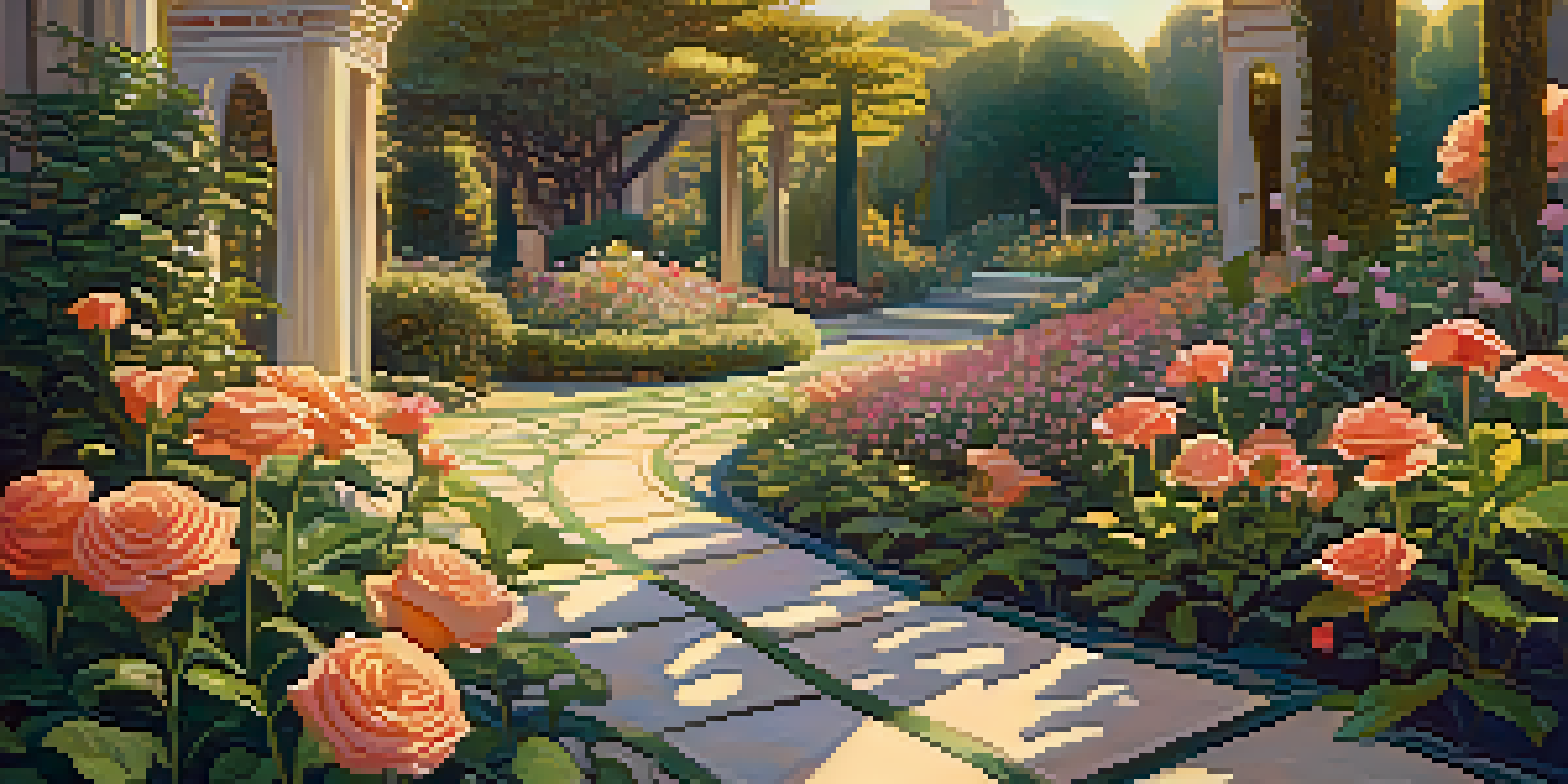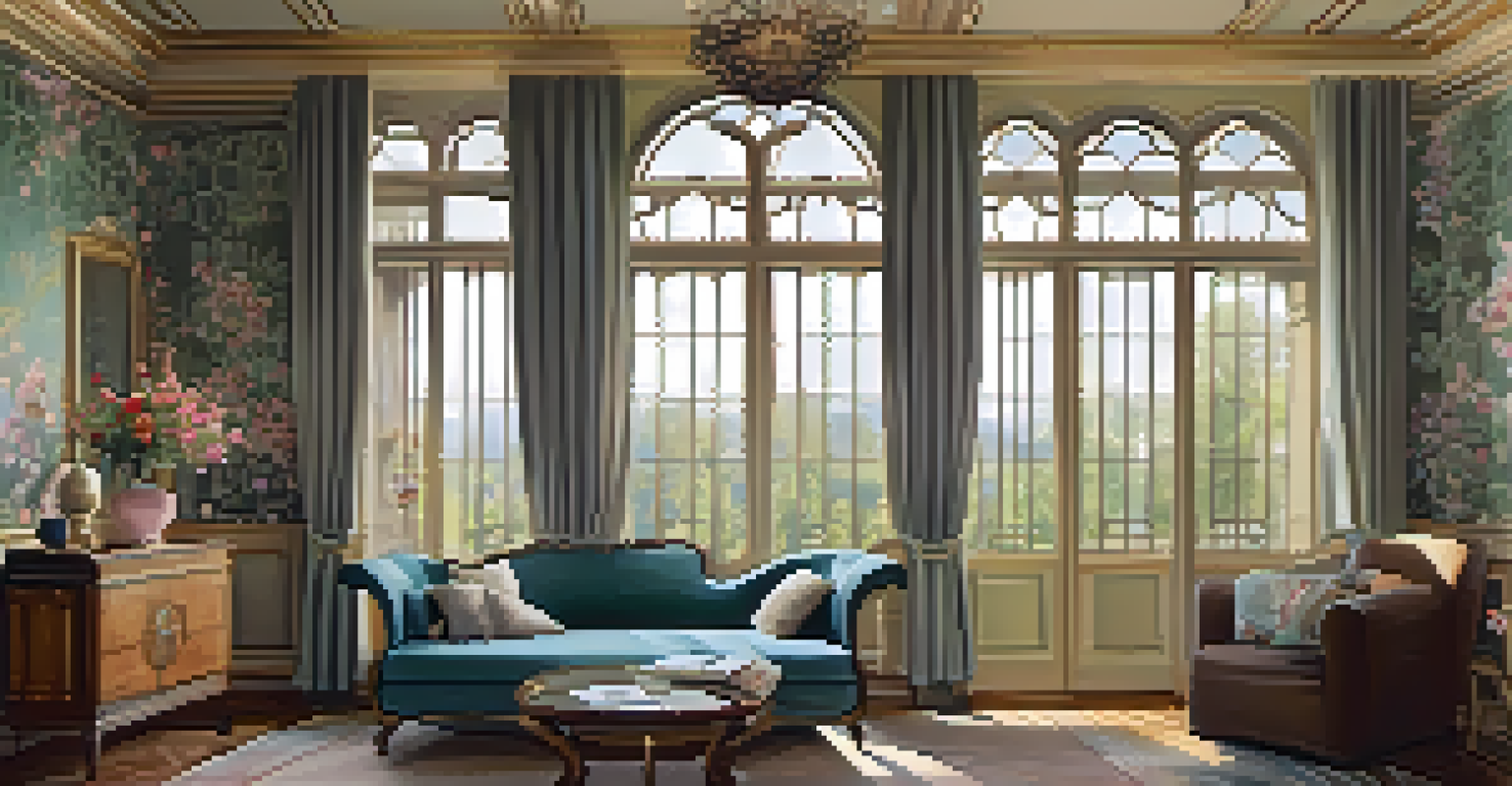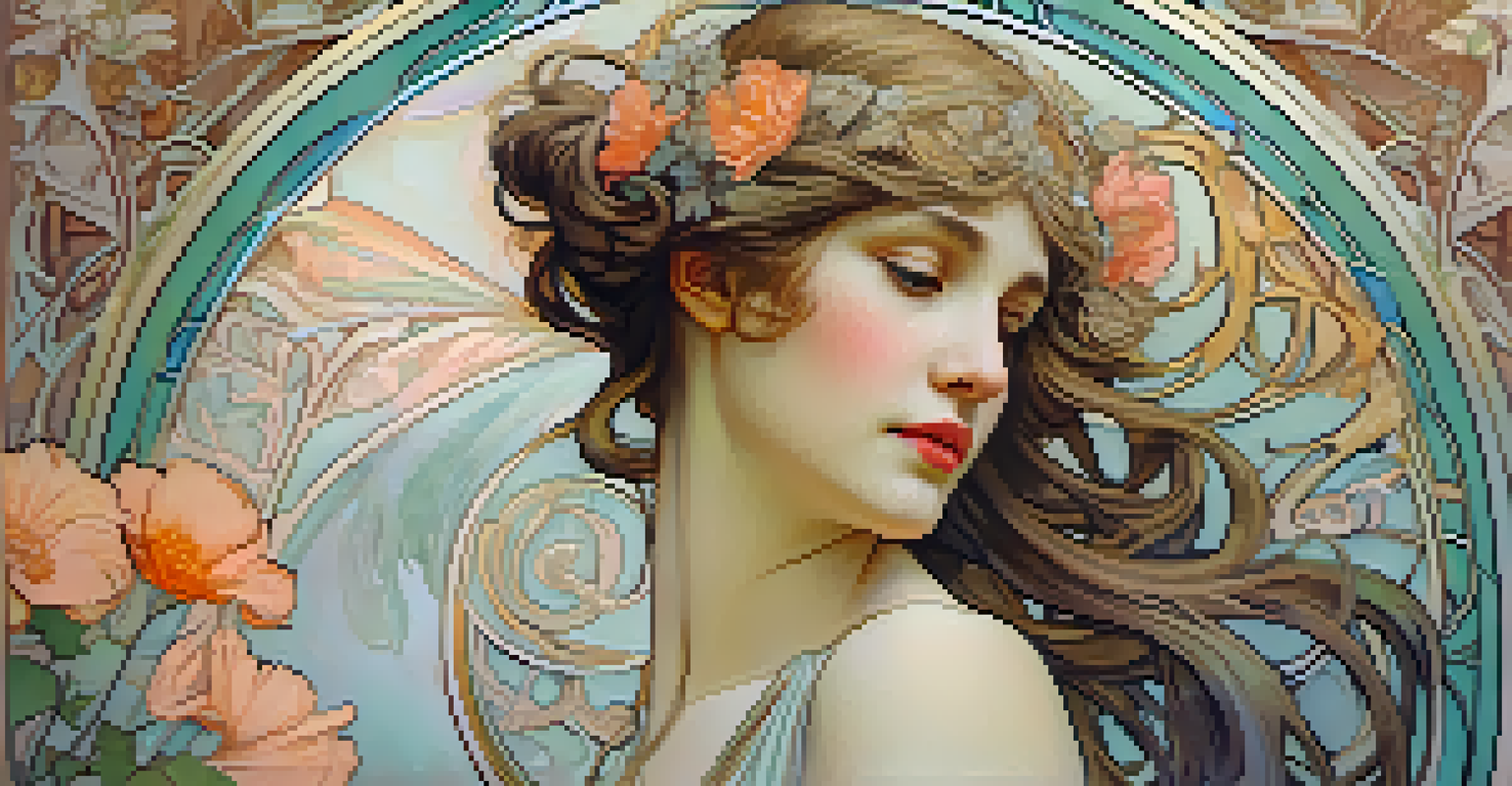Floral Motifs in Art Nouveau: Nature as Inspiration

Understanding Art Nouveau's Embrace of Nature
Art Nouveau, emerging in the late 19th century, was a movement that sought to break away from traditional styles. At its core, it celebrated the beauty of nature, particularly through floral motifs. Artists and designers believed that nature could inspire a new aesthetic, leading to forms that were more organic and fluid.
Art is the most beautiful of all lies.
This movement was characterized by its intricate designs and the use of natural forms, particularly flowers, vines, and leaves. It was not just about copying nature but interpreting it in a way that expressed a deeper connection to the environment. The flowing lines and shapes found in nature were mirrored in the artwork of the time, creating a harmonious blend of the two.
By integrating floral elements, Art Nouveau artists aimed to evoke emotions and a sense of tranquility. This connection to nature not only made art more relatable but also encouraged people to appreciate the beauty around them. It was a celebration of life and the natural world, fostering an appreciation that still resonates today.
The Symbolism of Floral Motifs in Art Nouveau
Floral motifs in Art Nouveau were not merely decorative; they often held significant symbolism. Different flowers represented various emotions and messages, allowing artists to convey complex ideas through their work. For instance, roses often symbolized love, while lilies represented purity.

This symbolic nature of flowers allowed artists to connect more deeply with their audience. Viewers could interpret the art on multiple levels, finding personal meaning in the floral elements. This depth of interpretation was a hallmark of the Art Nouveau movement, making each piece a conversation starter.
Nature's Role in Art Nouveau
Art Nouveau celebrated the beauty of nature through intricate floral motifs, reflecting a deeper connection between art and the environment.
Furthermore, the use of floral symbols reflected broader themes of femininity and sensuality prominent in Art Nouveau art. The delicate curves of flowers mirrored the female form, creating a visual dialogue between nature and human experience. This interplay added layers of meaning to the artwork, inviting viewers to explore their interpretations.
Iconic Artists and Their Floral Creations
Many renowned artists embraced floral motifs in their Art Nouveau works, each bringing their unique perspective. Alphonse Mucha, for example, is celebrated for his stunning posters featuring women surrounded by lush floral patterns. His use of soft colors and flowing lines created a dreamlike quality that captivated audiences.
Nature always wears the colors of the spirit.
Another notable figure is Gustav Klimt, who incorporated floral elements in a more abstract manner. His work often featured gold leaf and intricate patterns, with flowers woven into the fabric of his compositions. Klimt's innovative approach transformed traditional floral motifs into a modern expression of beauty and complexity.
These artists, among others, significantly influenced the trajectory of Art Nouveau, showcasing how floral motifs could be both decorative and deeply expressive. Their mastery of integrating nature into their work pushed the boundaries of art, inspiring future generations to explore the connection between creativity and the natural world.
Floral Motifs in Architecture and Design
Art Nouveau's influence extended beyond painting and illustration; it also transformed architecture and design. Architects like Antoni Gaudí incorporated floral motifs into their buildings, creating structures that seemed to grow organically from the ground. His work in Barcelona, with its floral-inspired facades, exemplifies this seamless blend of nature and architecture.
In addition to buildings, interior design during the Art Nouveau period featured floral elements prominently. Decorative arts, such as furniture and textiles, often showcased intricate floral patterns that echoed the style's organic aesthetic. These elements created a cohesive environment that felt alive and connected to nature.
Symbolism in Floral Motifs
Floral elements in Art Nouveau were rich in symbolism, allowing artists to convey complex emotions and themes, particularly around femininity and sensuality.
The integration of floral motifs in architecture and design not only beautified spaces but also brought a sense of harmony and comfort. This emphasis on nature created inviting environments that encouraged people to engage with their surroundings in a meaningful way. Ultimately, it reflected a broader cultural shift towards valuing the beauty of the natural world.
The Revival of Floral Motifs in Modern Design
Even today, the influence of Art Nouveau's floral motifs can be seen in contemporary design. Many modern artists and designers draw inspiration from this movement, reviving the intricate patterns and organic forms that characterized the era. This revival highlights the timeless appeal of nature in art and design.
For instance, floral motifs have made a significant comeback in fashion, with designers incorporating bold, nature-inspired prints into their collections. These designs evoke the same sense of beauty and connection to nature that Art Nouveau artists originally aimed to achieve. They serve as a reminder of the enduring impact of this artistic movement.
This modern embrace of floral motifs underscores a growing trend towards sustainability and appreciation for the environment. As designers seek to reconnect with nature, they are reminded of the lessons taught by Art Nouveau: that beauty can be found in the natural world and that art can reflect and enhance our relationship with it.
The Emotional Impact of Floral Motifs
Floral motifs have a unique ability to evoke emotions, making them a powerful tool in art and design. The presence of flowers in a piece can inspire feelings of joy, serenity, or nostalgia, connecting viewers to their personal experiences with nature. This emotional resonance is a key reason why floral motifs remain popular in contemporary art.
For example, a vibrant, blooming garden can remind someone of childhood memories spent outdoors, while a delicate floral pattern might evoke a sense of calm. This emotional connection enhances the viewer's experience, making the art more impactful and memorable. Artists harness this power by thoughtfully choosing floral elements that align with the feelings they want to convey.
Modern Revival of Floral Designs
The influence of Art Nouveau's floral motifs continues in modern design, highlighting a lasting appreciation for nature and its integration into contemporary art.
Moreover, this emotional impact contributes to the broader narrative of Art Nouveau as a movement focused on the human experience. By incorporating floral motifs, artists invite viewers to reflect on their relationship with nature and how it shapes their emotions. This profound connection is part of what makes floral motifs an enduring source of inspiration in art.
Conclusion: Nature's Lasting Influence on Art
In conclusion, floral motifs in Art Nouveau reflect a deep appreciation for nature and its beauty. This movement transformed how artists viewed and represented the natural world, leading to a rich tapestry of creativity that continues to inspire. Through intricate designs and symbolic meanings, floral elements became a cornerstone of art that transcends time.
As we look around us today, we can see the lasting influence of Art Nouveau in various art forms, from painting to architecture. The revival of floral motifs in modern design speaks to a collective desire to reconnect with nature and celebrate its beauty. It serves as a reminder that art can flourish when it draws inspiration from the world around us.

Ultimately, the legacy of floral motifs in Art Nouveau illustrates that nature is not just a backdrop for creativity but a vital source of inspiration. As we continue to explore the intersection of art and nature, we can find new ways to express our appreciation for the beauty that surrounds us.